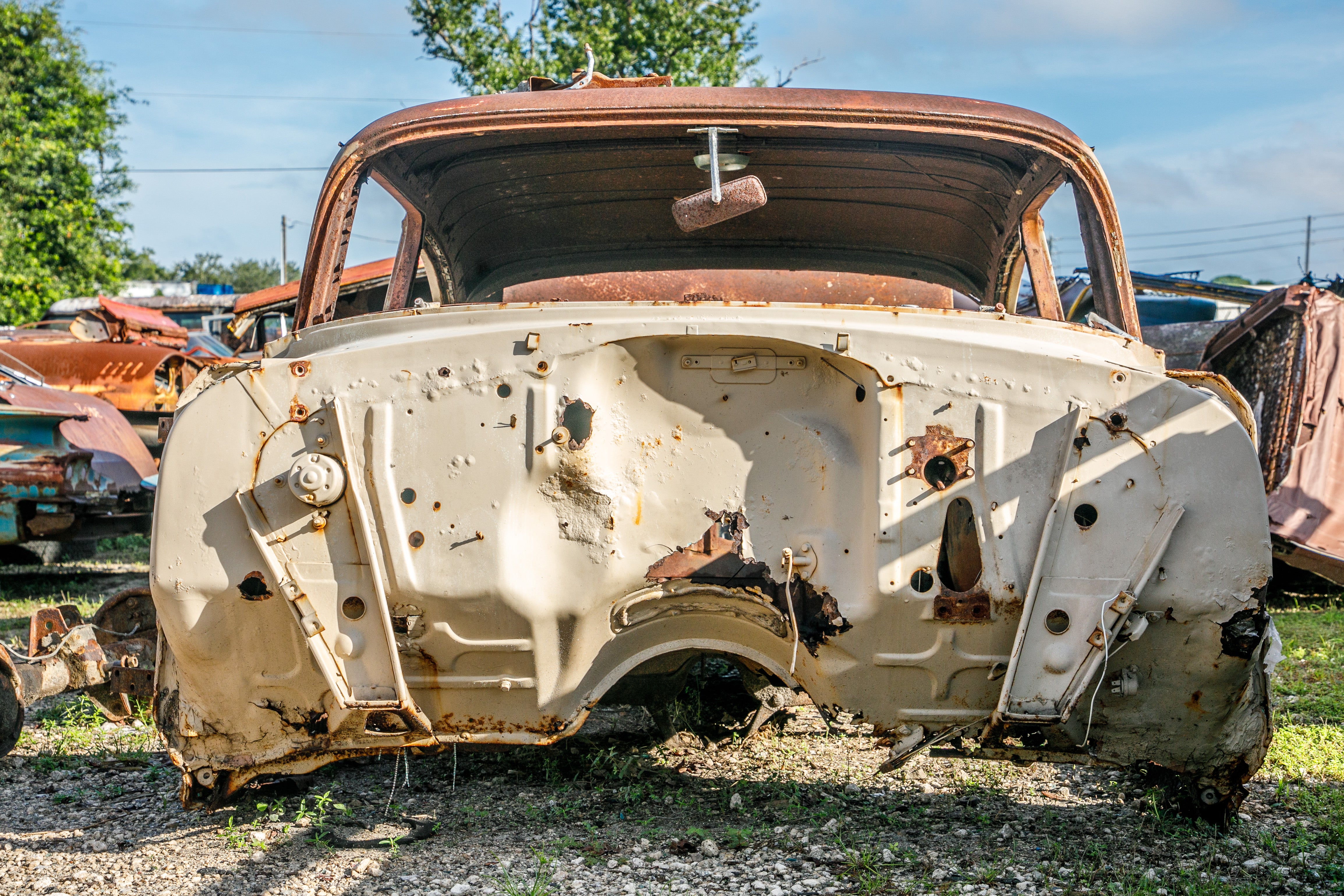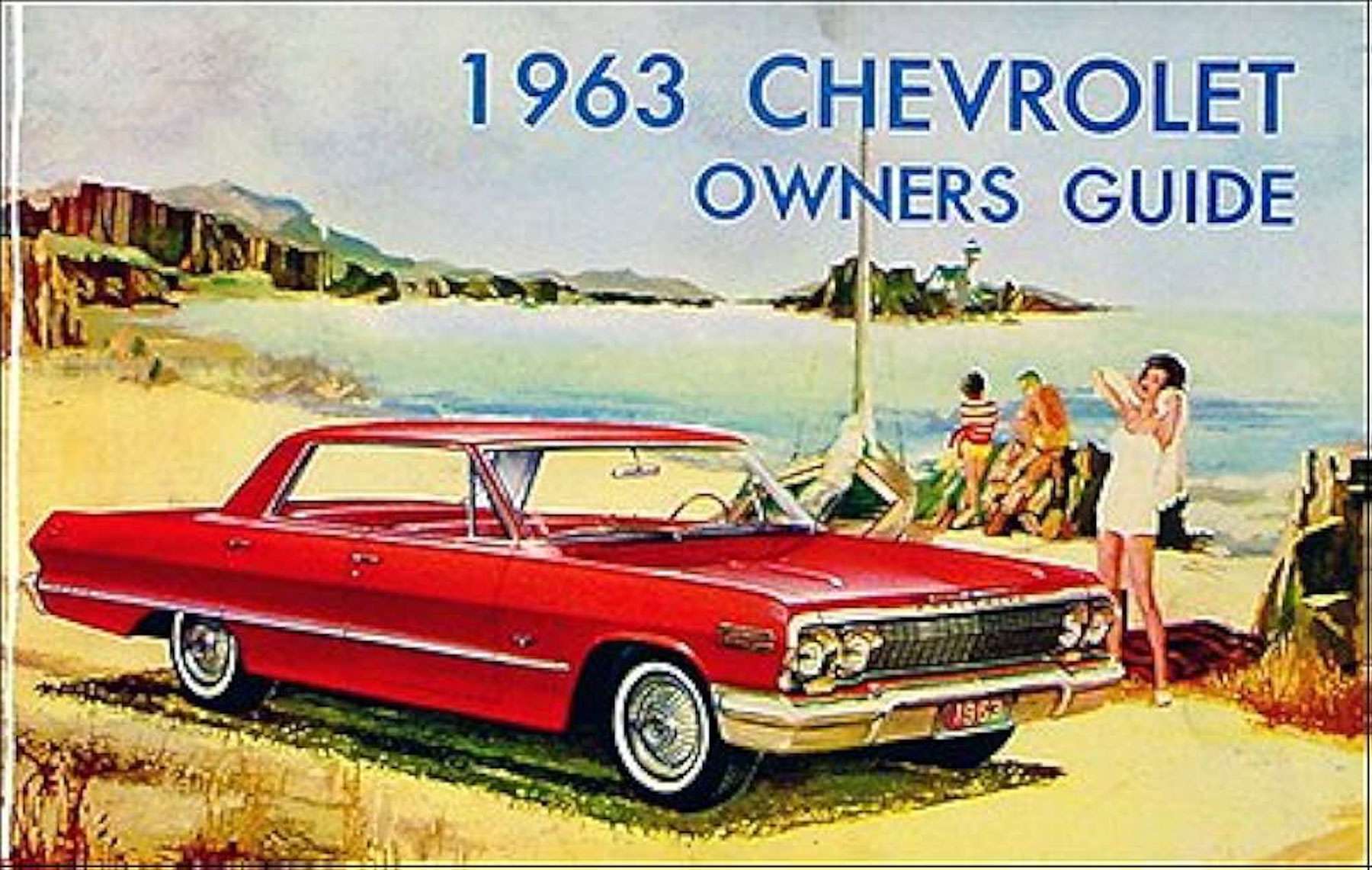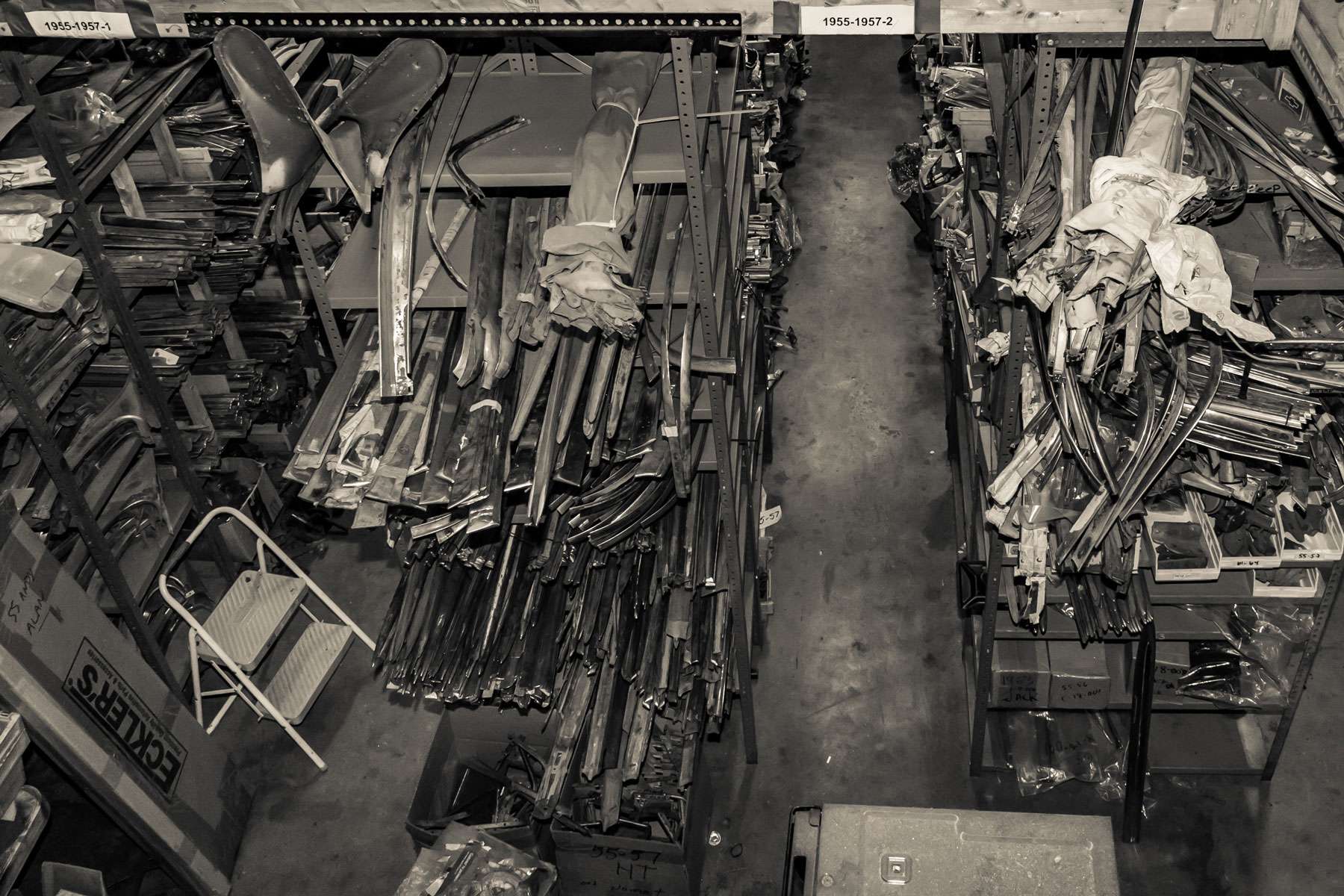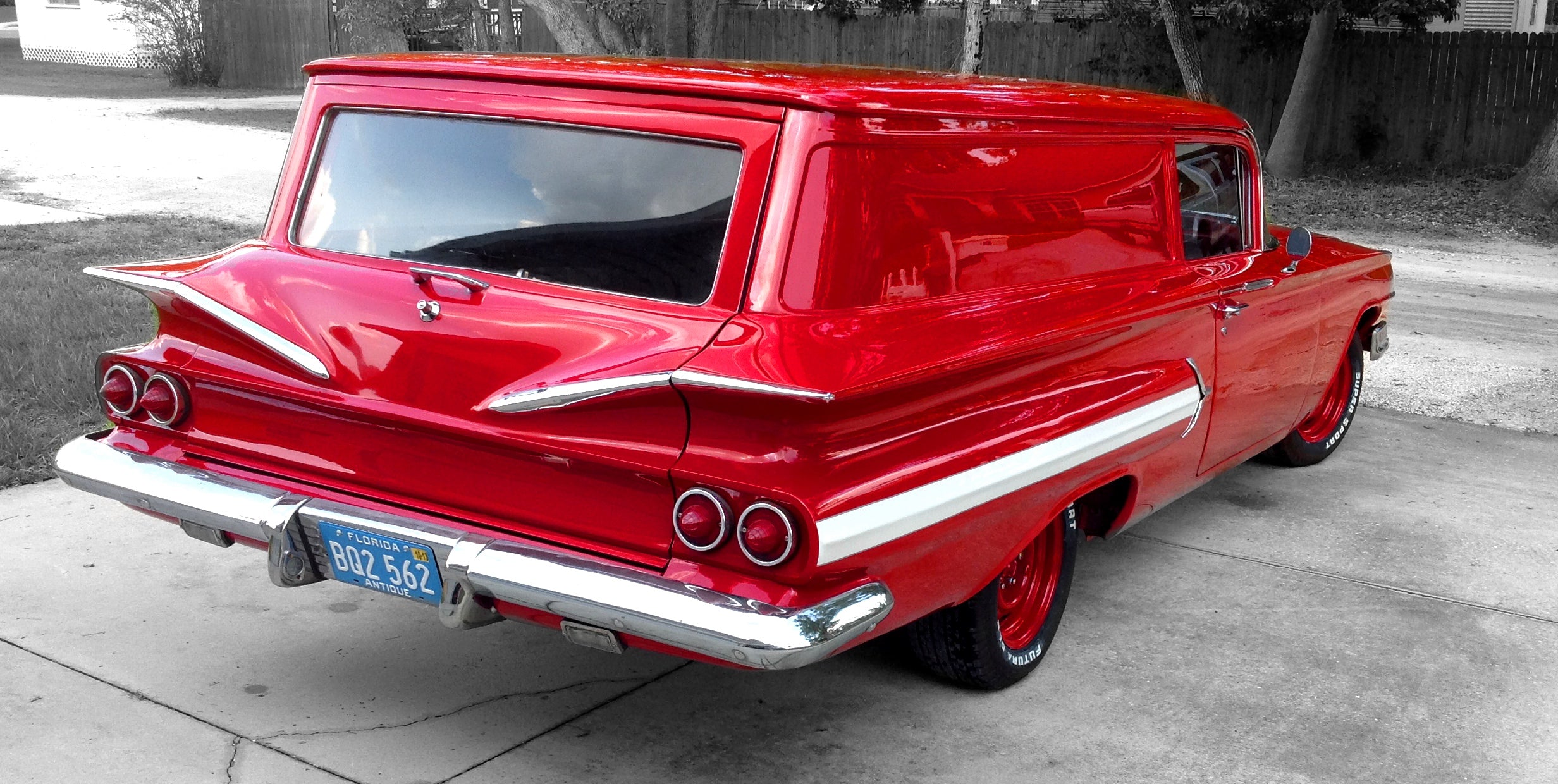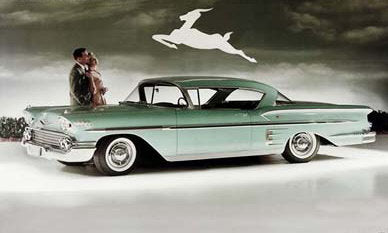
The 1958 Impala: The Future of Chevrolet
Chevrolet introduced the Impala in 1958 as their top-of-the-line full-size model. It competed well against competition from Ford and Plymouth. The design of the 1958 Impala signaled a move by Chevrolet away from conservative models of previous years. Sharp, flat shapes became extravagant curves. The company engineered the car differently, changing the frame from the simple perimeter style to a frame characterized by an elongated 'X' in the middle for extra rigidity. The new frame meant that the passenger compartment could be lower and bigger. The body carried extra stiffening and attached more securely to the frame, making it a forerunner to unitized construction of the body and the chassis.
The cost of a new Impala in 1958 was $2,586, about $20,000 in today's money. Cars in the late 1950's and '60's lasted half as long as they do now (100,000 miles versus 200,000 miles) so the average car owner replaced his car twice as often. This doubled the effective cost of the car.
The Impala engine included a 235 cubic-inch six-cylinder model called the 'Blue Flame.' Advertising from Chevrolet pointed out that the flame in the combustion chamber should burn blue, not yellow, to show that the fuel completely burned. The six cylinder engine had a good reputation for power and durability and produced 136 cubic centimeters (cc)of horsepower. Chevrolet offered two V8's. The Turbo Fire had 265 cubic inches in displacement and made from 185 to 283 horsepower depending on whether Chevrolet installed a single barrel or a double barrel carburetor or fuel injection. The biggest engine was the Turbo-Thrust V8 with 348 cubic inches and 305 cc of horsepower. An Impala buyer could choose a three-speed manual, a three-speed manual with overdrive, a three- speed automatic or a two-speed automatic transmission.

The exterior shouted chrome with chrome covering the lower half of the front end, chrome accents along the side, outlining each design element on the back end. Chrome mirrors were mounted halfway down the hood on the fenders. Unusual tail fins started next to the trunk and curved further toward the middle on the back end rather than protruding out from the body. The back end could be enhanced with a externally mounted spare tire, which hung outside the trunk. The Impala had dual headlights and three taillights on each side.
Virtually everything we take for granted on today's cars had to be ordered as an option, not standard equipment. Items such as power steering and brakes, power front seats, tinted glass, electric wipers, a manual or pushbutton radio and a heater could be left off the Impala. Chevrolet offered the Impala in black, glen or forest green, cashmere or fathom blue, tropic or aegean turquoise, and cream.
Today, 1958 Impalas sell for between $60,000 and $100,000, depending on condition and installed equipment.
